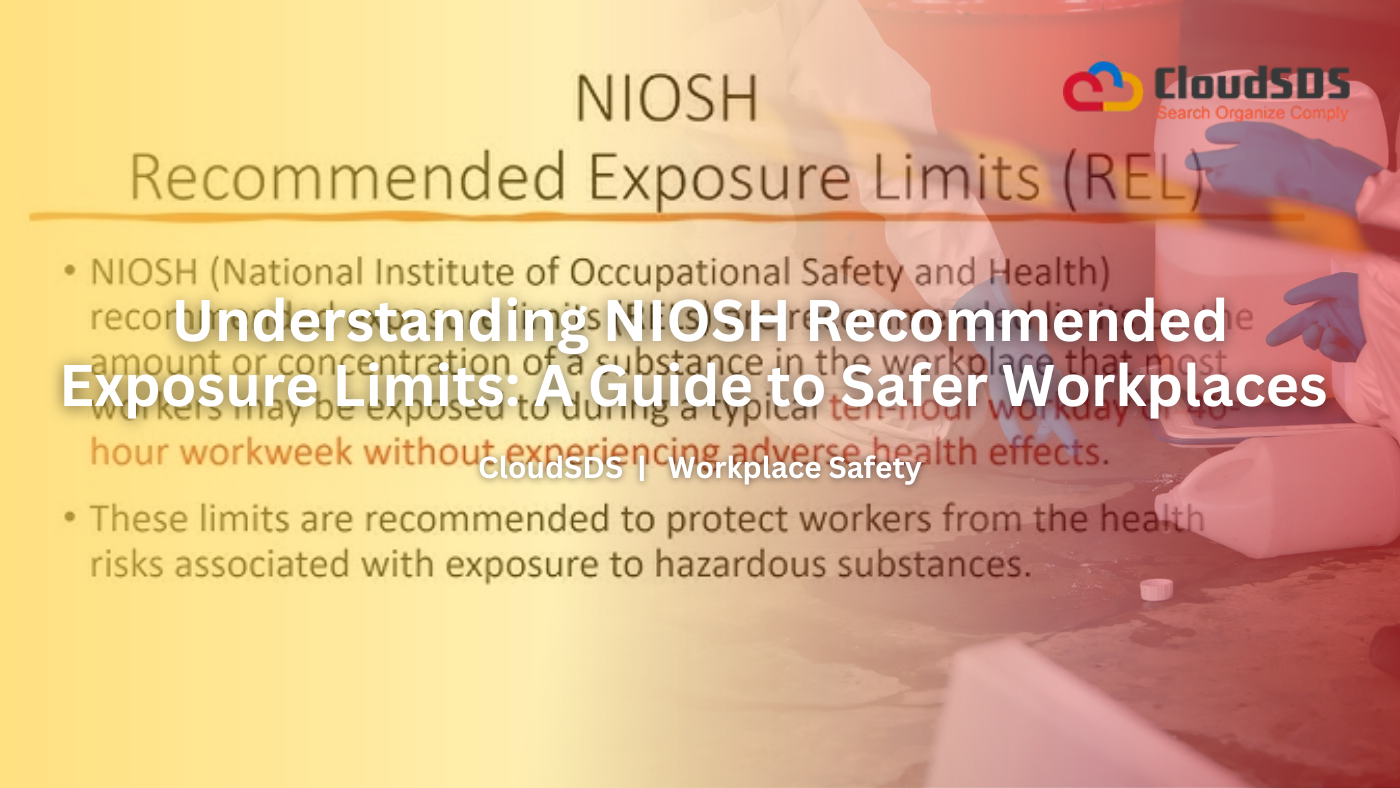Table of Contents
- Introduction
- What is NIOSH Recommended Exposure Limits (RELs)?
- What Makes NIOSH Exposure Limits Essential for Employers
- Case Study: Benzene Exposure at Oil & Gas Well Sites (2014)
- Building Safer Workplaces: Practical Steps
- Why Employers Should Care About RELs
- Conclusion
Introduction
The workplace exposure concentrations recommended by NIOSH (National Institute for Occupational Safety and Health) are known as Recommended Exposure Limits (RELs). RELs aim to keep workers safe from hazardous substances and conditions by using science-based thresholds for air contaminants, metals, noise, and other physical agents. Ignorance of RELs can lead to incidents like in 2014 joint OSHA-NIOSH evaluation of benzene exposure during tank gauging operations at oil and gas well sites in North Dakota. These RELs can be time-weighted averages (TWA), short-term exposure limits (STEL), or ceiling values. Each with specific health, safety, and legal implications for workplace environments.
What is NIOSH Recommended Exposure Limits (RELs)?
NIOSH Recommended Exposure Limits (RELs) are the concentrations of hazardous substances and physical agents that are considered safe for most workers over a given timeframe, such as a 10-hour workday and a 40-hour workweek. RELs take the form of:
- TWA (Time-Weighted Average): Average exposure allowed over a 10-hour shift.
- STEL (Short-Term Exposure Limit): 15-minute maximum that should not be exceeded at any time during a workday.
- Ceiling: The concentration that must never be exceeded, even briefly.
Examples of NIOSH RELs
| Substance | NIOSH REL |
|---|---|
| Asbestos (>5 µm fibers) | 100,000 fibers/m³ (0.1 fiber/cm³) |
| Lead (inorganic, as Pb) | 0.050 mg/m³ (8-hr TWA) |
| Metalworking Fluid Aerosols | 0.4 mg/m³ (thoracic particulate) 0.5 mg/m³ (total) TWA (10-hr) |
| Carbon Nanotubes (CNTs) | 1 μg/m³ elemental carbon (respirable) TWA (8-hr) |
| Noise (occupational) | 85 dB(A) (8-hr TWA) |
| Hydrogen Sulfide (H₂S) | 10 ppm (Ceiling, NIOSH) 100 ppm (IDLH) |
These values show NIOSH’s commitment to minimizing risks to workers – whether protection from carcinogens, respiratory hazards, or sensory exposures.
What Makes NIOSH Exposure Limits Essential for Employers
- Health-First Approach: RELs are grounded in the latest science—protecting against cancer, respiratory illness, neurological damage, hearing loss, and other occupational hazards.
- More Protective Than Laws: Though not enforceable by law, RELs are typically more conservative than OSHA’s PELs, which may be based on outdated science.
- Flexibility in Strategy: With definitions for TWA, STEL, and Ceiling limits, RELs empower industry professionals to tailor protective measures across different scenarios—from short peak exposures to chronic low-level contacts.
- Practical Application: RELs push innovation in workplace controls: substitution, ventilation, containment, behavioral protocols, and PPE design.
Lessons from the Field: Benzene Exposure at Well Sites
One of the most striking examples of why RELs matter is the 2014 joint OSHA-NIOSH evaluation of benzene exposure during tank gauging operations at oil and gas well sites in North Dakota.
What happened?
Workers were doing their routine jobs—manually opening hatches and gauging fluid levels in storage tanks. During this process, volatile organic compounds and benzene were released in high concentrations.
The Consequences:
- Out of 17 workers tested, 88% exceeded the REL of 0.1 ppm (8-hr TWA).
- Some workers also exceeded the NIOSH short-term exposure limit of 1 ppm.
- Peak benzene levels spiked above 200 ppm—a concentration considered Immediately Dangerous to Life or Health (IDLH).
- OSHA’s legal PEL of 1 ppm was technically not violated in average exposure calculations, yet workers were still at serious risk.
Health Effects
- Benzene is a well-known human carcinogen.
- Chronic exposure can lead to leukemia, immune suppression, and bone marrow disorders.
- Short-term high exposures can cause dizziness, unconsciousness, and even death.
The Lesson
This case highlights the gap between OSHA’s legal standards and NIOSH’s health-based recommendations. While the employer may have been “in compliance,” workers were clearly unsafe. By adopting NIOSH RELs, employers in high-risk industries can avoid tragedies, prevent chronic illness, and protect lives.
Building Safer Workplaces: Practical Steps for Employers and EHS Leaders
Adopt RELs as Workplace Standards
For safer outcomes, organizations must adhere to the stricter NIOSH RELs even in cases where OSHA permits higher limits.
Monitor Real-Time and TWA Exposures
Organizations must use direct-reading instruments to detect and immediately respond to peak exposures that TWAs might miss.
Strengthen Hygiene Practices
Employers must enforce showering, changing clothes at work, and avoiding "take-home" contaminated clothes when it comes to lead hazards.
Educate & Train Staff
Employers must make the workers understand RELs, their importance, and how to take corrective action—regardless of legality.
Update Facility Controls
Organizations must invest in engineering controls and PPE informed by RELs—especially when handling highly toxic or volatile substances.
Regularly Review & Update
RELs evolve as science advances. Employers must stay informed via NIOSH publications, bulletins, and the Pocket Guide to Chemical Hazards.
Why Employers Should Care About RELs
- Protecting Workers’ Health: RELs are designed to prevent both acute and long-term illnesses, including cancers, lung disease, and neurological conditions.
- Reducing Liability: Companies that rely only on outdated OSHA PELs risk lawsuits and reputational damage if workers fall ill.
- Future-Proofing Safety Programs: Regulations evolve. Aligning with RELs prepares businesses for stricter future compliance.
- Employee Morale and Retention: Workers who feel genuinely protected are more engaged and loyal.
Conclusion
The above discussion has proved that workplace safety is about protecting people in real life and not just following rules on paper. NIOSH’s Recommended Exposure Limits (RELs) go beyond regulatory requirements such as OSHA’s Permissible Exposure Limits (PELs) because they are developed from the latest scientific research, with the goal of safeguarding health over a lifetime—not simply ensuring compliance.
Every REL represents real workers: mothers, fathers, sons, daughters—individuals whose futures depend on safe environments. When a company chooses to follow RELs, it sends a clear message that its people matter and their wellbeing is the top priority, not just an afterthought or a legal checkbox.

Leave A Comment